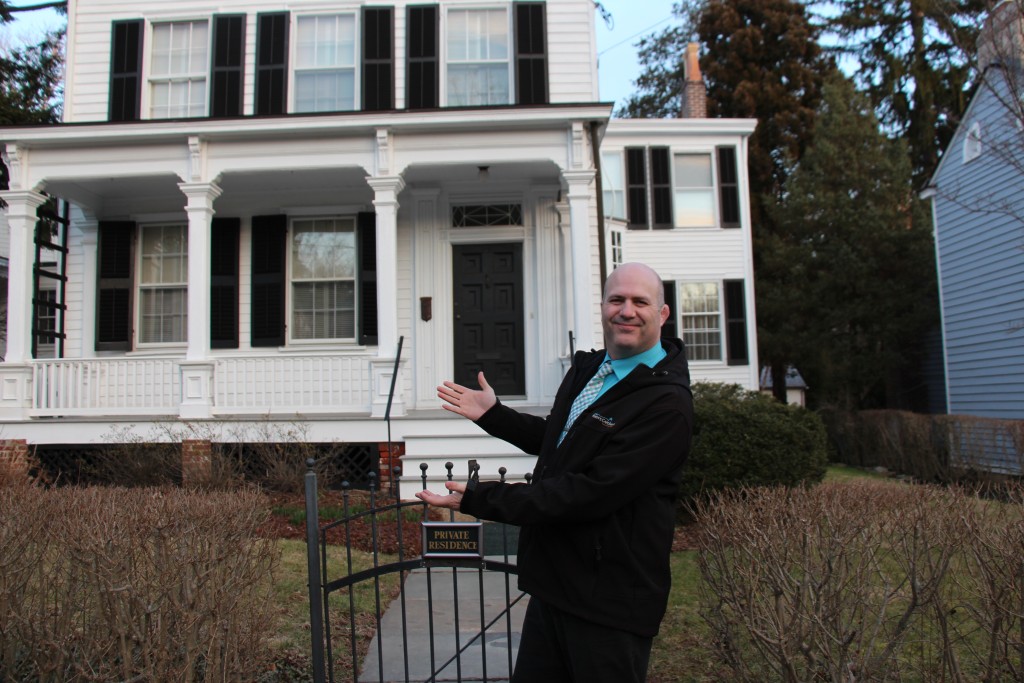RHS Engineering Brightness students attended the IEEE Integrated STEM conference at Princeton University in New Jersey. The theme of the conference is around how we can merge the arts and sciences together FOR PURPOSE. When you say for Purpose, that has many different definitions for many different people. I find it interesting that we write it as an acronym with S.T.E.M as opposed to a single word like STEM, STEAM or ESHTEAM. I wonder if the periods between the letters are part of our subconscious that wants to keep each piece in their own silo. Is the “A” in STEAM just an add on to STEM or is it an integral part that makes something fundamentally different?
Is STEM by itself move us towards Einstein’s quote?
It is a fine line between throwing pieces together and saying that the different disciplines are integrated and having the pieces being dependant on each other. A bunch of athletes who are working out in a gymnasium does not make a team. I was discouraged when one presentation was celebrating how they integrated the arts and STEM. They talked about a book that students had made, but then added a couple of cheezy LED’s to the book. This frustrated me to think that I came all the way to Princeton and that was the level of integration that was presented. My unhappiness was short lived. I was VERY much ENCOURAGED when the same presentation showed the next iteration. It was a teaching tool for the blood flow of a heart. Students had to choose a disease to explore. This group chose a heart defect. The created a nice model of the heart, complete with different colour paint for oxygenated and deoxygenated blood. They also used LED’s to show the flow of blood in the healthy and defective heart. NICE!! The art and science came together for purpose to create a useful tool. The art and science are interdependent. There is synergy. Each is not as good without the other. I was so happy that is was at least one level higher than the bottom of the spectrum of integrating STEM and the ARTS.
Lucinda and Rob have rightly identified that there does not seem to be any kind of formal way of assessing the quality of the intersection between arts and sciences. They are trying to collect exemplars and distill the best practices. Lucinda hopes to produce a matrix that would help educators move from low level integration to high levels.
It was obvious that many of the delegates looked at S.T.E.M and S.T.E.(a) M. I think the periods between the letters are barriers between the disciplines of science, technology, engineering and math and arts. Many teach these disciplines, but do so in isolated silos. It also shows that the “a” is lower case, again showing that the arts have a diminutive role to play. Running a STEM themed school and throwing a music or graphics arts class in there does not make for high level integration. Many think that they are at the top of the game, when in reality there are many more multiple levels that they have not yet considered.
These words are words not acronyms. You should not be able to tell the difference between one and the other. They should flow together. If you take a letter away, you should get something different. I was able to sit beside John Price, the VP of INTEL Ed, during the award ceremony for Preston Middle School getting the “middle school of the world” award. I found it interesting that Jon, who was one of the evaluators, was surprised when one of the teachers was identified as an English teacher. Jon said, ” I thought he was a science guy. Now that I think about it, he was always talking about language”. The language and the science were so integrated that it was difficult to distinguish what class it was. This is what we must aspire to. It should not be “S.T.E.(a).M. but rather “STEAM”. Each piece should have synergy, more than the sum of the parts.
I wonder if Lucinda’s matrix will help open the eyes of educators and help them move from low level integration of the disciplines to high level. Over supper, I had the pleasure of chatting with Lucinda about the RHS projects like Xenotransplant, Saxby Gale, and Engineering Brightness. She suggested that we would compete with the highest end of the spectrum. These projects take STEAM to a whole new level.
At a Program Director’s for SHAD International (www.shad.ca) meeting a few years ago, we were talking about how STEM is incomplete, and even though STEAM was starting to catch on, it was still missing something. Paul, from SHAD Waterloo, came up with the word “ESHTEAM” purposefully pronounced similar to ESTEEM, to include Entrepreneurship, Humanities and Esteem. The projects that we have in our back pocket bring all of these disciplines together naturally for real purpose. Any real problem is going to have multiple facets that need to be addressed. The Xeno, Saxy and Engineering Brightness projects all fit this bill.
I wonder what will happen when Lucinda’s matrix is done. The theoretical framework of the matrix will need to have some practical examples along the spectrum. The advantage to having only a few sources of examples is that one does not need to worry about offending anyone when one project is at the bottom of the spectrum and others are at the top. Between Chris and I at RHS, Tracey and John at Preston and a few other friends and SHAD, we should be able to populate the book quite nicely.
Hopefully, we can move away from S.T.E.M and towards ESHTEAM and “… awaken joy in creativity expression and knowledge.”





